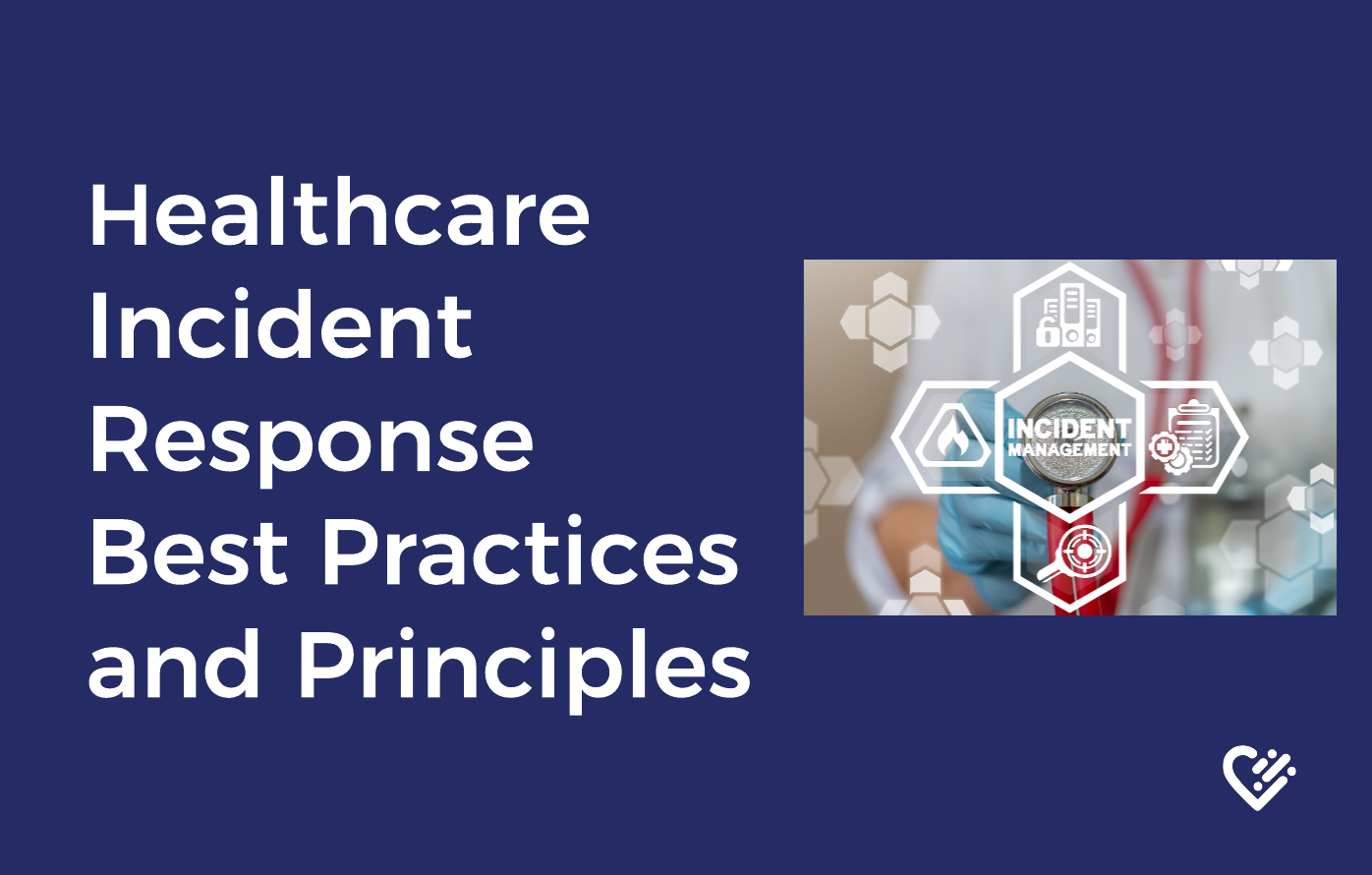The need for a well-defined and actionable incident response plan is paramount in the healthcare industry, where a myriad of conditions can put workers and other personnel at risk for items related to safety, privacy, and more. Notably, various entities such as institutional policies, health organizations, professional associations, and local regulations advocate for creating healthcare incident response plans encompassing safety protocols, prevention measures, and incident reporting.
The process and actions required to detect, manage, and mitigate incidents require a coordinated and systematic approach. Join us as we delve into aspects of incident response in healthcare, including best practices to put in place and third-party tools that can assist.
Guiding Principles of an Incidence Response Plan
The main principles of incident response are:
- Improve operational readiness
- Empower operational decisions in the field
- Provide incident support and communication coordination
- Encourage a collaborative culture
- Ensure interoperability and integration with existing standards
- Institutionalize accountability and improvement
Incidence Response Framework: Best Practices
Below are some recommended best practices that should be used as a valuable supplement while creating your incident response plan. We strongly advise consulting additional resources or seeking assistance from experts as needed. Here are some common incident response plan best practices:
1. Form a Specialized Team to Craft a Comprehensive Plan: The team should include representatives from IT, security, legal, compliance, and any other relevant department. The comprehensive Incident Response Plan (IRP) should outline what procedures to follow during a security event, specifically addressing real-world incident types and establishing clear escalation paths.
2. Rapid Response and Simulation Exercises: Healthcare organizations should conduct frequent training sessions and simulation drills with a team formed and a plan in place. This will ensure the Incident Response Team (IRT) has the preparation and familiarity with their roles and responsibilities to respond rapidly.
3. Incident Classification System: To help prioritize responses and allocate appropriate resources, an organization needs to establish a system for classifying various incidents based on severity and potential impact.
4. Containment and Eradication: After an incident has been detected, the focus should be on containing the threat to prevent further damage or health risks. Don’t settle for a quick fix – tackle the incident’s root cause to avoid future recurrence.
5. Open Collaboration between Teams: Communication and collaboration are critical in incidence response, particularly between healthcare personnel, legal, and IT teams.
6. Establish a Communications Strategy: A well-developed communication strategy for internal and external stakeholders promotes transparent, timely communication during and after an incident.
How Immuware’s Incident Management System Software Can Assist
Immuware’s own Incident Module is a powerful tool for streamlining incident response processes, making reporting, remediation, and prevention more effective and efficient. Organizations can submit and track employee safety events, evaluate workplace safety, analyze industry trends, and implement preventative actions to reduce or eliminate worker safety hazards.
Moreover, those in charge can initiate an incident workflow to help track the incident from incident to completion. Such incident workflows are facilitated by timely reminders via email and text messages so that necessary follow-ups are not overlooked. Correspondingly, the Incident dashboard creates valuable reports for those in charge to see, automatically populating helpful information, forms, and logs for assistance.
Overall, Immuware’s real-time tracking capabilities enable organizations to easily monitor compliance, injuries, and exposures, promoting a safer and more secure workplace for all. To keep updated on all things employee health-related, including insight into occupational health tracking, visit our healthcare news blog today. Otherwise, visit https://Immuware.com for more information.
References:
